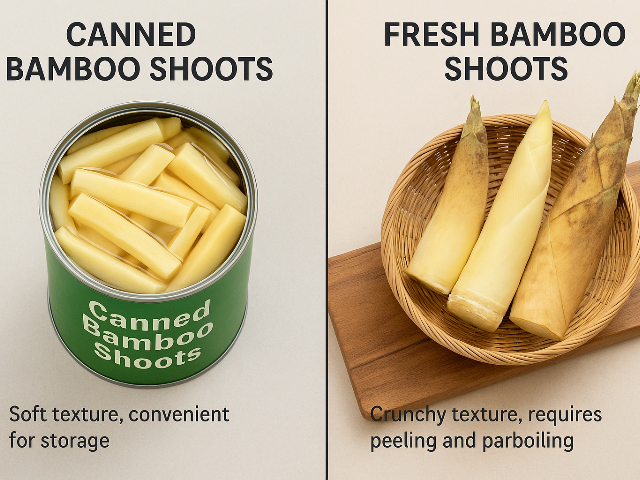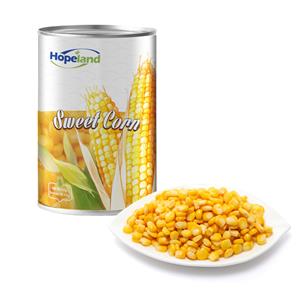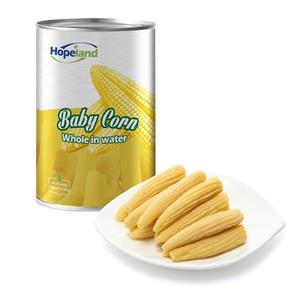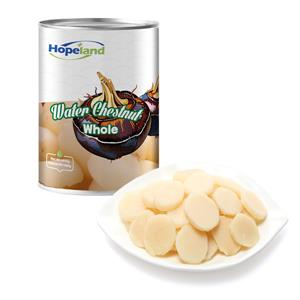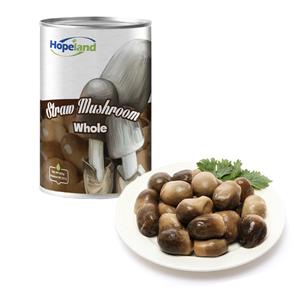What is the Difference Between Canned Bamboo Shoots and Fresh Bamboo Shoots?
Bamboo shoots are a beloved ingredient across many Asian cuisines and are increasingly appreciated worldwide for their unique texture, mild flavor, and nutritional value. Whether served in stir-fries, soups, or salads, they add a crispness that enhances a variety of dishes. But when it comes to cooking, there is often a choice to make between fresh bamboo shoots and canned bamboo shoots. Each offers its own set of characteristics, benefits, and limitations.
This article will dive deep into the differences between canned bamboo shoots and fresh bamboo shoots, exploring their origins, processing methods, flavor profiles, nutritional values, culinary uses, and storage requirements. By the end, you’ll know which option best suits your needs in different cooking scenarios.
The Basics: What Are Bamboo Shoots?
Before comparing canned and fresh varieties, it helps to understand what bamboo shoots are. Bamboo shoots are the young, tender sprouts that emerge from the soil near the base of a bamboo plant. These shoots are harvested before they grow too tall and harden into woody stalks.
Bamboo shoots have been consumed for centuries, especially in China, Japan, Korea, and Southeast Asia. They are prized for their crunchy texture and delicate flavor, which pairs well with both bold spices and subtle broths.
There are many types of bamboo species used for culinary purposes, including Moso, Madake, and Makino bamboo. The harvested shoots vary in size, shape, and taste depending on the species and region.
Fresh Bamboo Shoots: Characteristics and Challenges
Appearance and Texture
Fresh bamboo shoots are cone-shaped with tough, fibrous outer husks that need to be peeled away before cooking. Inside, the flesh is pale yellow to cream-colored, crisp, and moist. When cooked properly, fresh bamboo shoots maintain a tender yet firm bite.
Flavor Profile
Fresh bamboo shoots offer a mildly sweet, earthy flavor with a subtle nutty undertone. However, if not prepared correctly, they can taste bitter due to naturally occurring toxins.
Preparation and Cooking
One of the most important considerations with fresh bamboo shoots is the need for proper preparation. Fresh shoots contain cyanogenic glycosides, compounds that release cyanide when digested. To eliminate this toxin, they must be thoroughly peeled, sliced, and boiled in water for at least 20–30 minutes. Some recipes call for changing the water once or twice during boiling.
Once cooked, fresh bamboo shoots can be incorporated into stir-fries, braised dishes, soups, or even served chilled in salads.
Availability
Fresh bamboo shoots are highly seasonal, usually harvested in spring and early summer. Outside of Asia, they may be harder to find, typically only available in specialty Asian markets or farmers' markets during their peak season.
Storage
Fresh bamboo shoots are highly perishable. Unpeeled, they can be stored in the refrigerator for up to two weeks if wrapped in a damp cloth. Once peeled, they should be submerged in water (changed daily) and used within a few days.
Canned Bamboo Shoots: Convenience and Versatility
Appearance and Texture
Canned bamboo shoots are pre-peeled, pre-cooked, and packed in water or brine in cans or jars. They are typically available in sliced, diced, or whole forms. The texture is still crisp but slightly softer compared to freshly boiled shoots.
Flavor Profile
Canned bamboo shoots have a more muted flavor than fresh ones. While still mild and slightly earthy, they can sometimes carry a hint of metallic or briny taste from the canning process. Rinsing them under cold water before use helps reduce any residual taste from the liquid.
Preparation and Cooking
Canned bamboo shoots are ready to use straight from the can after draining and rinsing. Since they have already been boiled during processing, there is no need for additional preparation to remove toxins. This convenience makes them an ideal choice for quick weeknight meals or when fresh shoots are unavailable.
They work well in most dishes where bamboo shoots are used: stir-fries, curries, dumplings, and hotpots.
Availability
One of the main advantages of canned bamboo shoots is year-round availability. They are widely stocked in supermarkets, Asian grocery stores, and online retailers. This makes them a reliable pantry staple for home cooks and restaurants alike.
Storage
Unopened canned bamboo shoots have a long shelf life, typically 1–3 years depending on the manufacturer. Once opened, they should be transferred to an airtight container, covered with fresh water, and stored in the refrigerator. The water should be changed daily, and the shoots consumed within 3–5 days for optimal freshness.
Nutritional Comparison: Fresh vs. Canned
Both fresh and canned bamboo shoots are low in calories and rich in fiber, potassium, and antioxidants. However, there are subtle differences in their nutritional profiles:
Nutrient | Fresh Bamboo Shoots (per 100g) | Canned Bamboo Shoots (per 100g) |
Calories | ~27 kcal | ~12–20 kcal |
Fiber | 2.2 g | 1.5–2.0 g |
Potassium | 533 mg | ~200–300 mg |
Sodium | 4 mg | 200–300 mg (if packed in brine) |
Key Considerations:
Canned bamboo shoots may have a slightly lower nutrient density due to the canning process.
Sodium content can be significantly higher if the shoots are packed in brine. Rinsing them before use helps reduce this.
Fresh bamboo shoots provide a more natural, unaltered nutrient profile.
Culinary Uses: When to Choose Fresh or Canned?
When to Choose Fresh Bamboo Shoots
For gourmet dishes where flavor and texture are critical.
When you have time to prepare and boil them properly.
In seasonal recipes celebrating spring’s bounty.
If you want to enjoy their delicate, slightly sweet taste in simple preparations.
When to Choose Canned Bamboo Shoots
For quick, everyday cooking.
When fresh bamboo shoots are unavailable or out of season.
In dishes with strong sauces and spices where subtle flavor differences are less noticeable.
As a pantry staple for emergencies or spontaneous meals.
Environmental and Economic Aspects
Fresh Bamboo Shoots
Harvesting fresh bamboo shoots is labor-intensive and seasonal. They are often considered a luxury item in regions where they aren’t grown locally, leading to higher prices due to transportation and limited availability.
Canned Bamboo Shoots
Canning helps reduce food waste by preserving shoots that might otherwise spoil before reaching distant markets. They are generally more affordable and accessible globally, making them an economic choice for consumers and restaurants.
Summary of Key Differences
Feature | Fresh Bamboo Shoots | Canned Bamboo Shoots |
Preparation | Requires peeling and boiling | Ready to use after rinsing |
Availability | Seasonal, limited regions | Year-round, widely available |
Flavor | Fresh, sweet, earthy | Mild, may have slight briny taste |
Texture | Crisp, tender | Slightly softer but still firm |
Storage | Short shelf life | Long shelf life unopened |
Price | Higher (outside Asia) | More affordable |
Nutritional Value | Slightly higher | Slight nutrient loss during canning |
Which Should You Choose?
Ultimately, the choice between fresh and canned bamboo shoots depends on your priorities:
For authenticity and superior taste: Fresh bamboo shoots are ideal.
For convenience and accessibility: Canned bamboo shoots are unbeatable.
For home cooks who enjoy experimenting with traditional Asian cuisine, using fresh bamboo shoots when they are in season can be a rewarding culinary experience. On the other hand, canned bamboo shoots provide a practical alternative that fits seamlessly into modern, busy lifestyles.
Conclusion
Bamboo shoots, whether fresh or canned, bring a unique element to countless dishes around the world. Fresh shoots offer unparalleled flavor and texture for those willing to invest the time in preparation, while canned bamboo shoots provide a convenient and reliable option for everyday cooking. Understanding their differences empowers you to make the best choice for your recipes and enjoy the crisp, delicate delight of bamboo shoots in any season.

